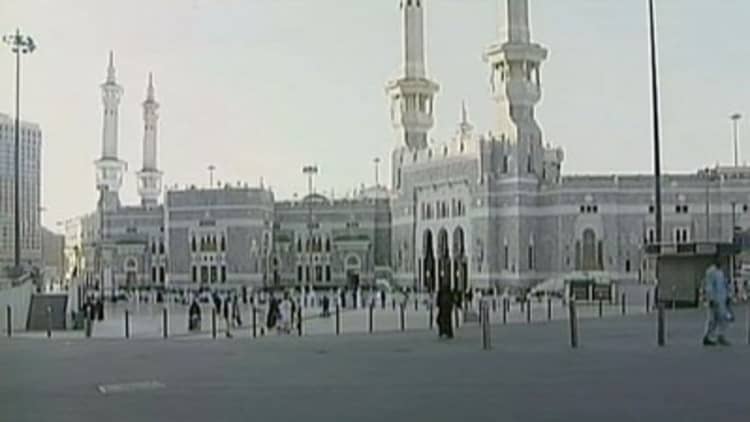
Low oil prices are continuing to hit the Middle East powerhouse Saudi Arabia with U.S. ratings agency Moody's warning that "credit risks" across the country's financial system are rising.
On Wednesday, Moody's announced that it was downgrading Saudi Arabia's banking system from "stable" to "negative", saying that its revised outlook reflected "the rating agency's expectation that the persistently low oil prices and resultant government spending declines will ultimately weigh on the Saudi banking sector."
"We expect the operating environment for Saudi banks to weaken over the next 12-18 months," Olivier Panis, a Moody's vice president and senior credit officer, said in the agency's report on Saudi Arabia.
"With the prospect of lower oil prices for longer and a 14 percent reduction in public spending in 2016, we believe that the credit risks across the system are rising."
Saudi Arabia is one of the world's largest oil exporters and with much of its wealth and government budget dependent on oil revenues, it has been sorely hit by a plunge in oil prices over the last few years – from $114 a barrel in June 2014 to currently around $38 per barrel of benchmark Brent crude.
Moody's forecasted real gross domestic product (GDP) growth to slow to 1.5 percent for 2016 and 2 percent for 2017 – well below the 3.4 percent growth of 2015 – and for average oil prices to stay at $33 a barrel in 2016 and $38 in 2017.
As a result, the rating agency said it expected loan growth to slow down to between 3 percent and 5 percent for 2016, from 8 percent in 2015 (and 12 percent in 2014). Moody's also expects asset risk to rise as a result of the deteriorating operating environment, it said.
"We expect non-performing loans to increase to around 2.5 percent of total loans over our outlook horizon, from a very low average 1.4 percent in September 2015 -- still lower than for most other Gulf countries," Panis said.
"Banks will also continue to remain exposed to event risks stemming from persistently high single-party exposures -- although we estimate that around 10-25 percent of banks' top 20 loans are either to the government or wider public sector."
Despite increased funding costs and loan-loss provisions, Moody's said that profitability among the country's banking sector was likely to "remain strong" due to the low cost of funding and the banks' "lean cost structure and zero corporate tax rate."
Finally, although Moody's expected government support for the Saudi banking system to remain high, the ratings agency noted there are signs that authorities' policy stance "may evolve in line with global practices." "In addition, government support assumptions could be further challenged on the basis of fiscal pressure for the Saudi government, signaling a potential reduction of government capacity to support banks in case of need," it said.
By CNBC's Holly Ellyatt, follow her on Twitter @HollyEllyatt. Follow CNBC International on Twitter and Facebook.





